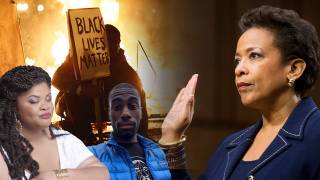The October Crisis - Martial Law in Canada
Source: historyofrights.com
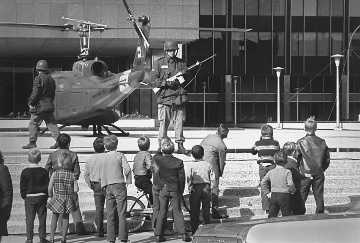 In October 1970, the nation held its collective breath as events in Quebec unfolded. The October crisis, initiated by the kidnappings of James Cross and Pierre Laporte by the Front de libération du Québec (FLQ), was one of the most stunning events of the period, and the subject of intense discussion in the media as well as academic and political circles for decades. For the second and only other time in Canadian history, twenty-four years after the espionage commission, the powers of the War Measures Act were employed to suspend Canadians’ fundamental civil liberties in peacetime.
In October 1970, the nation held its collective breath as events in Quebec unfolded. The October crisis, initiated by the kidnappings of James Cross and Pierre Laporte by the Front de libération du Québec (FLQ), was one of the most stunning events of the period, and the subject of intense discussion in the media as well as academic and political circles for decades. For the second and only other time in Canadian history, twenty-four years after the espionage commission, the powers of the War Measures Act were employed to suspend Canadians’ fundamental civil liberties in peacetime.FLQ activities date back to as early as 1961 with graffiti and other forms of vandalism calling for an independent Quebec, with the first bombs exploding in an army barracks on 7 March 1963. Soon after, bombs detonated at a federal tax building, a Canadian National Railway station and rail tracks at Lemieux. Twenty-four sticks of dynamite were found at a broadcast tower of Canadian Broadcasting Corporation on Mount Royal (they failed to detonate) and the statue of General Wolfe on the Plains of Abraham was topped by vandals. Wilfrid O’Neil, a night watchman, became the FLQ’s first victim, killed during a bomb attack on a Canadian forces recruiting centre in Montreal in April 1963. On 19 February 1969 the most spectacular bombing by the FLQ took placed at the Montreal Stock Exchange where 20 people were injured. The attack was initiated by one of the most violent cells of the FLQ network, led by Pierre-Paul Geoffrey. He was soon arrested and pleaded guilty to all the actions of his cell. Judge André Fabien, presiding over Geoffrey’s trial, handed down the most severe sentence in the history of the British Commonwealth: 124 life sentences.
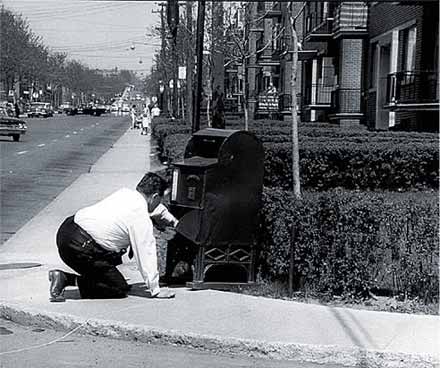
Police officers attempt to disarm FLQ bomb left in mailbox, May 17, 1963. (NAC PA-137862)
After years of conflict, however, the FLQ upped the stakes on 5 October 1970 by kidnapping a member of the British consulate in Montreal, James Cross. The police immediately organized one of the largest manhunts in Canadian history. Between 7 and 10 October, police carried out nearly 1000 raids; they arrested, questioned, and then released about 50 people. When the provincial government balked at giving in to the majority of the terrorists’ demands, such as releasing ‘political’ prisoners and sending the kidnappers to Cuba or Algeria with an armload of gold bullion, another cell of the FLQ proceeded to kidnap the provincial Minister of Labour, Pierre Laporte.
While the Quebec government negotiated with an FLQ lawyer, military reinforcements poured into Quebec. Six thousand troops were stationed in Montreal by 15 October. Soldiers lined the streets of the city and patrolled government buildings. Desperate to find a solution, on 16 October Premier Robert Bourassa and Jean Drapeau (Mayor of Montreal) sent a letter to Prime Minister Pierre Elliot Trudeau declaring their belief that an apprehended insurrection was at hand and called on the federal government to intervene. Trudeau responded with the imposition of the War Measures Act. The next day Pierre Laporte was found in the trunk of a car, murdered by the FLQ.
For further details on the crisis, refer to the list of readings on this site for the October Crisis of 1970. In sum, Cross was eventually released on 3 December and his abductors, who would return to Quebec ten years later, were flown to Cuba. Laporte’s killers were arrested and sent to jail, although none of them served their full sentence. The army remained in Quebec until 29 December. The War Measures Act was replaced soon after by a more restricted series of public order regulations which lasted until the summer of 1971. Under the emergency powers, two hundred and eighty-eight people were arrested in the first night, and eventually 438 were detained and police conducted 3068 searches without warrants. As had been the case in most police raids dealing with FLQ violence, raids and arrests were directed against nationalists and the political Left in general. Each individual arrested under the War Measures Act was denied their basic rights to due process. Habeas corpus was suspended and individuals were detained without notifying their families. Most were not permitted to consult legal counsel while others were held incommunicado. The regulations passed under the War Measures Act made membership in the FLQ a crime and, most importantly, the crime was made retroactive. A person who had attended a single FLQ meeting in the early 1960s was, by the wording of the regulations, criminally liable.
The statistics on those arrested during this period is a testament to the over eagerness of the police in employing emergency powers, as had been the case in 1946. Those arrested spent an average of a week in jail or up to 21 days (legal limit) without charge; a large majority, almost 90 percent, were eventually released without ever being charged. Those who were charged with a crime spent an average of two and a half months in jail before being released on bail; 95 percent of them were either acquitted or had the charges withdrawn. Only 20 people were ever found guilty of a crime arising out of the October crisis of 1970.
The arrest and detention of suspected terrorists was only the tip of the iceberg. The effect of invoking the War Measures Act would be felt as far away as British Columbia, and had widespread ramifications in Quebec politics. The crisis was also the pretext to the formation of new civil liberties and human rights groups across Canada, including the Canadian Federation of Civil Liberties and Human Rights Associations.
Article from: historyofrights.com
Canadian Prime Minister Pierre Trudeau - "Just Watch me"
Video from: YouTube.com
The October Crisis Of 1970
"From 1963 to 1970 the Quebec nationalist group Front de libération du Québec had detonated over 95 bombs. While mailboxes—particularly in the affluent and predominantly Anglophone (English Speaking) city of Westmount—were common targets, the largest single bombing was of the Montreal Stock Exchange on February 13, 1969, which caused extensive damage and injured 27 people."
Video from: YouTube.com
The October Crisis reinterpreted
By Brian Stewart | CBC.ca
[..]
Was the security situation sparked by the kidnappings of British diplomat James Cross on Oct. 5 and Quebec minister Pierre Laporte (soon murdered by his captors) on Oct. 10 evidence of a dangerous terrorist movement with enough growing support to provoke an insurrection against the elected government in Quebec?
Did it justify the use of the army, the suspension of certain liberties and the mass preventative arrests of almost 500 people under the War Measures Act?
Or, were these measures an unseemly national panic in the face of what was, in reality, a series of small, amateurish and ill-coordinated plots by an FLQ underground comprising fewer than 50 active members at any one time?
A panic manipulated by the Trudeau government, an inexperienced Robert Bourassa in Quebec City and by Montreal’s hardline and exceptionally authoritarian mayor Jean Drapeau to crush the separatist movement in Quebec?
Read the full article at: cbc.ca
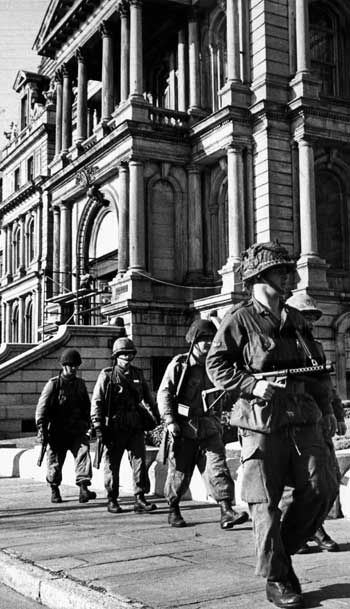
A patrol of soldiers with semi-automatic rifles and one with a machine gun marches past Montreal City Hall on Friday, Oct. 16, 1970, as the War Measures Act was implemented. (LaPresse/Canadian Press)
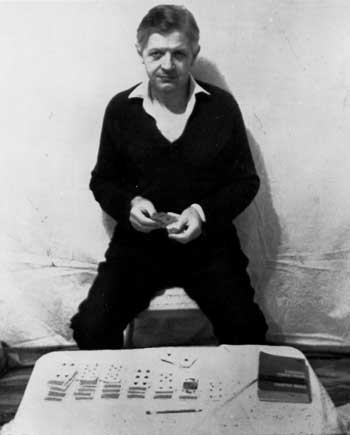
Then British Trade Commissioner James Cross plays solitaire almost one month after his kidnapping in this photo released by his FLQ kidnappers in early November 1970. He would not be released until Dec. 3, 1970 when his captors would be allowed to leave the country for Cuba. (Canadian Press)
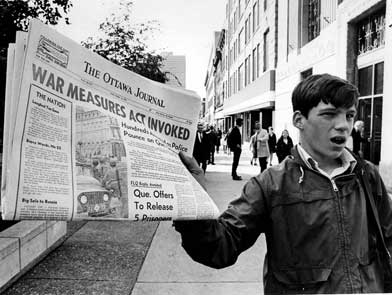
The implementation of the War Measures Act on Oct. 16, 1970, 11 days after the kidnapping of James Cross and the day before Pierre Laporte was found dead in the trunk of a car.(Peter Bregg/Canadian Press)
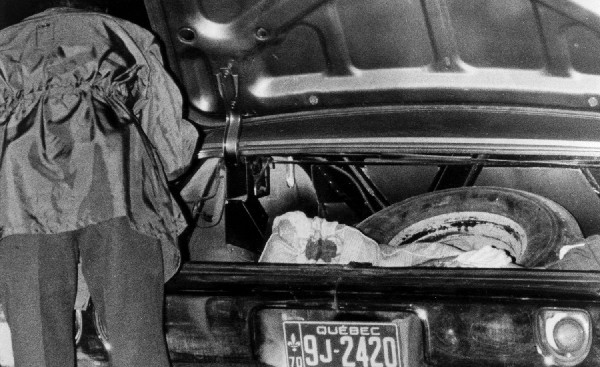
The above picture of the body of Quebec labour minister Pierre Laporte in the trunk of a car was one which shocked the normally-aplomb nation to its core. On Oct. 17, 1970, a week after he was being kidnapped by the terrorist group Front de Libération du Québec (FLQ) during the October Crisis, Laporte’s body was found at the St. Hubert Airport south of Montreal. Photo: Robert Nadon for CanadaPress
OCTOBER CRISIS OF 1970 QUEBEC (Documentary)
Video from: YouTube.com











